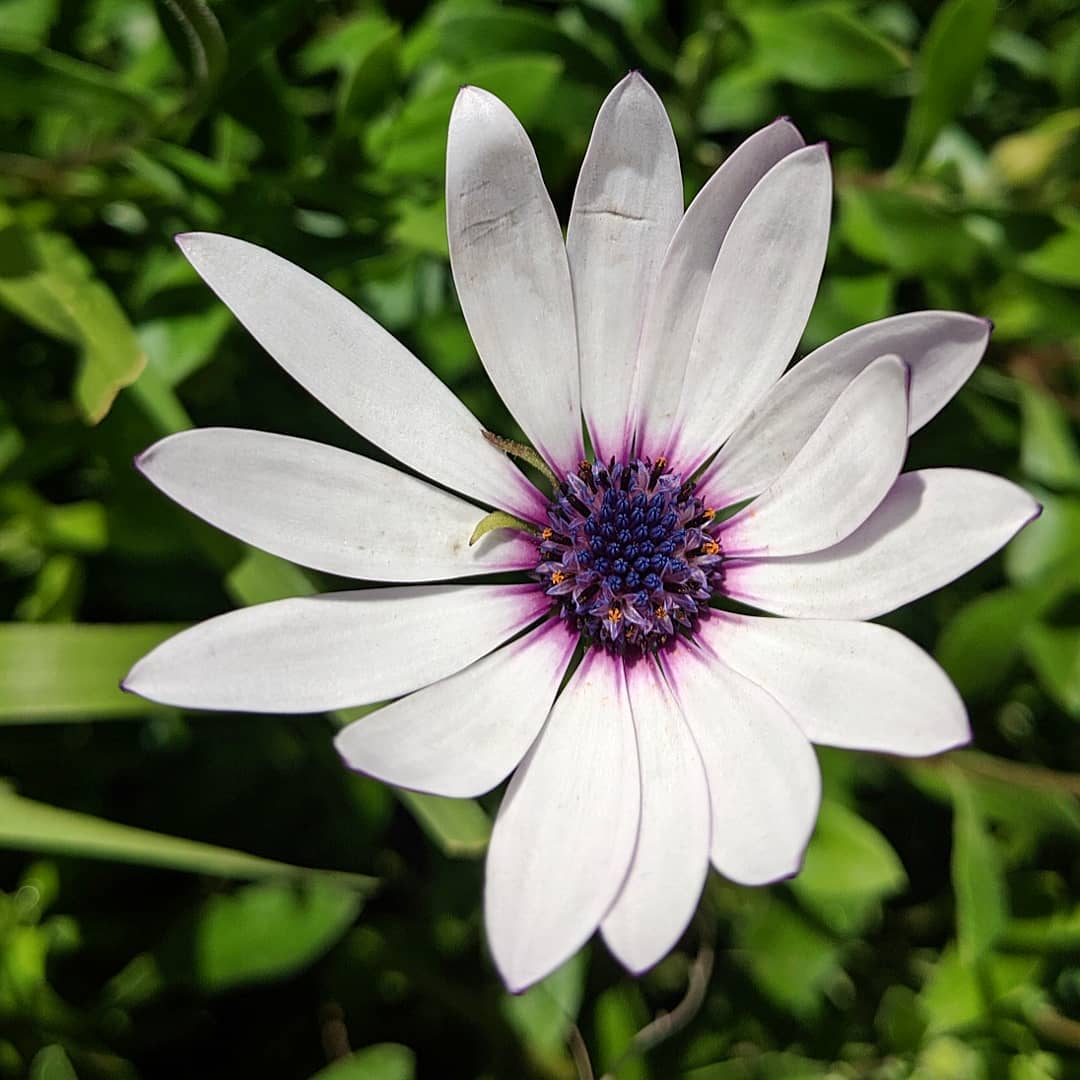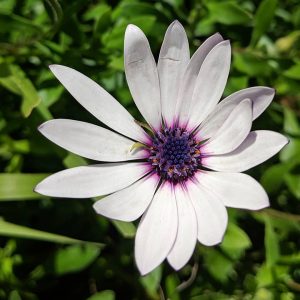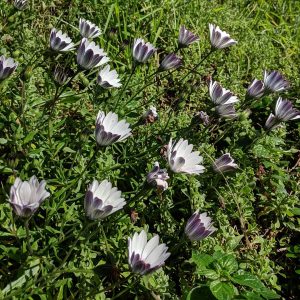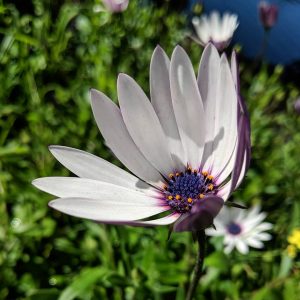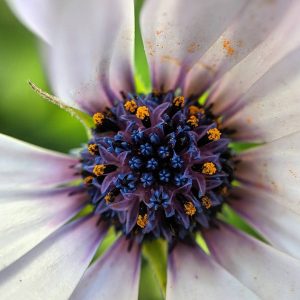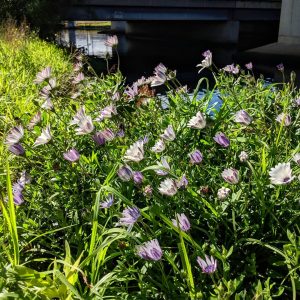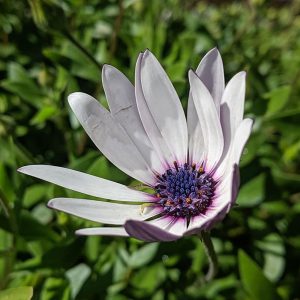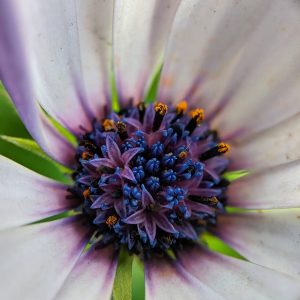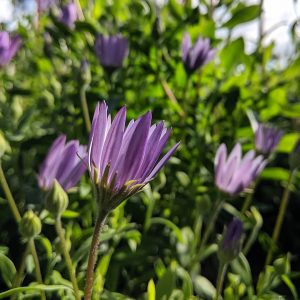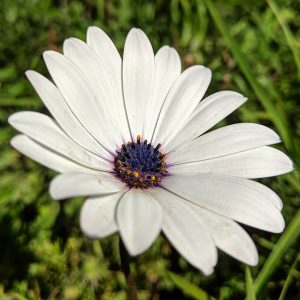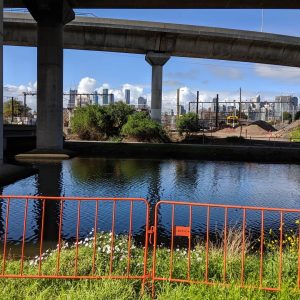Trailing African Daisy (Dimorphotheca fruticosa), a showy South African aster that has springboarded back into ruderal ecology in an increasing number of Mediterranean climates around the world.
Adopted and widely hybridised as an easy-growing, dominating groundcover with modern sensibilities and stunning, ultra-coloured flowers, Trailing African Daisy was so widely planted in California in the latter half of the 20th century that it became known as ‘Freeway Daisy’.
Also called Osteospermum on the basis of its disputed classification in that genus (we’ll go with the treatment in VicFlora), these asters began naturalising in New Zealand in the 1960s and have since made their escape in California and in south-eastern Australia, where they are on their way to becoming a routine colonist of coastal, riparian and infrastructural settings.
The species has been recorded in South Australia since the 1970s. It appears to have jumped from garden beds in Melbourne’s north-east periphery in the 1990s, showing up on bushland fringes in Donvale, Park Orchards and Nillumbik. These daisies have also been recorded in coastal dunes from Wonthaggi to Warrnambool, and as incipient environmental weeds up into the Werribee Gorge and the southern goldfields.
Photographed is a sizeable colony along the lower reach of Moonee Ponds Creek (and at a different site from one collected by D. Ohlsen in 2017). Also observed but not included here was an apparently spontaneous occurrence seen last weekend in roadside verge along the Princes Highway in Werribee.
View Original Post on Instagram
Search for information about Dimorphotheca fruticosa in the Flora of Victoria
View information and occurrences of Dimorphotheca fruticosa on the Atlas of Living Australia
